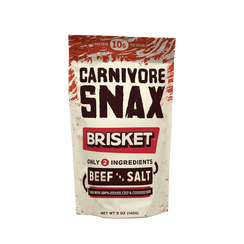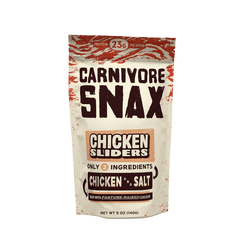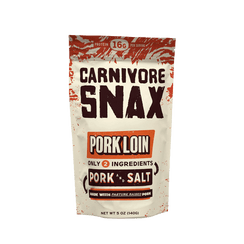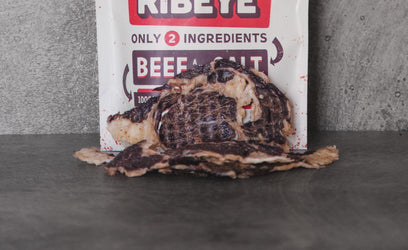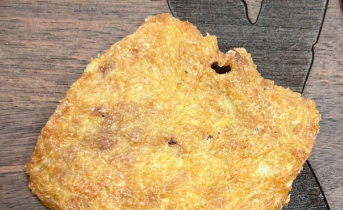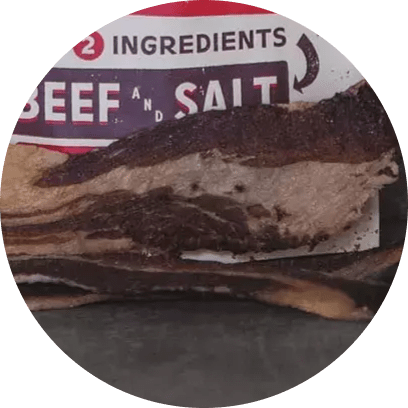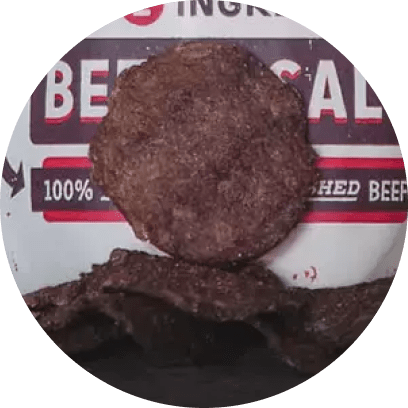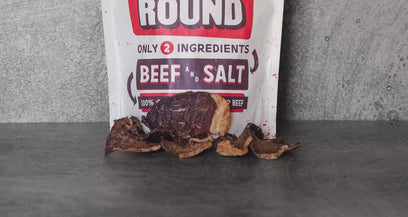THE CARNIVORE DIET BENEFITS




A revolution is quietly unfolding in the vast, open pastures where cows once roamed freely. Dairy farming, a practice as ancient as civilization itself, is undergoing a profound transformation. And we’re going to introduce you to it here in this guide to regenerative dairy farming.
This farming method emerges as a beacon of hope as the world grapples with the challenges of an evolving climate, degrading soil health, and a growing demand for ethical food production.
It not only takes us back to the roots of traditional farming but also propels us forward, ensuring a sustainable future for both the planet and its inhabitants.
If you've ever enjoyed the creamy delight of milk or cherished the rich flavors of cheese, then this evolution in dairy farming is a story you need to hear. Discover how the dairy on your table is becoming a part of a larger, regenerative narrative.
What is a Regenerative Dairy Farming?
First things first - what is regenerative farming itself? This is a philosophy centered on harmonizing farming with nature. It’s how our ecosystems thrived in the past before commercial farming took hold of the world. And, it’s how we’re going to preserve our lands for the long haul.
Core Principles of Regenerative Dairy Farming
So, how does regenerative agriculture work? It takes a vastly different approach than conventional farming, working with the land rather than against it. Here’s how:
- Soil Health is Paramount Unwavering commitment to soil health is at the heart of regenerative dairy farming. Unlike traditional methods which might deplete the soil, regenerative farming treats soil as a living ecosystem. Techniques such as rotational grazing ensure that pastures remain fertile and vibrant. Our guide to regenerative agriculture soil health provides more insights on this topic.
- Holistic Animal Welfare: The cows on a regenerative farm are viewed as mere units of production - they're integral parts of the ecosystem. Their well-being, both physical and emotional, is prioritized. This means spacious pastures, natural diets, and minimized stress.
- Biodiversity Enhancement: Regenerative dairy farms are a haven for diverse species. By avoiding monocultures and promoting native plant growth, these farms become a refuge for various local flora and fauna, creating a balanced and resilient ecosystem. Learn more in our guide on regenerative agriculture biodiversity
- Carbon Sequestration: One of the shining merits of regenerative farming is its ability to capture carbon dioxide from the atmosphere and store it in the soil. Regenerative agriculture carbon sequestration not only preserves our land but also enriches the soil, making it more fertile and productive.
There are countless regenerative farming techniques used to make it all happen - from the ones we’ve mentioned above to cover crops for regenerative farming to regenerative agriculture fertilizer. But, the best way to understand regenerative dairy farming is to compare it to its problematic commercial counterpart.
Key Differences Between Regenerative and Commercial Dairy
There are stark differences in how a regenerative dairy farm operates and the tumultuous state of a commercial dairy farm. These include:
- Grazing Patterns: While conventional farms might confine cows to limited spaces, regenerative farming promotes rotational grazing, allowing fields time to recover and rejuvenate. This isn’t just better for the lands but also the dairy cows themselves.
- Use of Chemicals: Conventional dairy might often rely on synthetic fertilizers and pesticides. In contrast, regenerative farms employ natural alternatives, ensuring that the milk produced is free from harmful residues.
- Sustainability Outlook: Conventional farming often prioritizes short-term yields, sometimes at the environment's expense. Regenerative farming, however, adopts a long-term view, understanding that the health of the land and the health of the dairy are inextricably linked.
- Economic Resilience: While initially demanding, regenerative dairy farming can offer better economic stability in the long run. Healthy soils and ecosystems can better withstand droughts, diseases, and pests, reducing the need for external inputs and interventions.
The Benefits of Regenerative Dairy Farming
You might already be starting to understand the benefits of regenerative farming. But if not, why is regenerative agriculture important?
This model prioritizes not just the production of milk but the holistic health of the environment, animals, consumers, and even the farmers themselves.
We’ll highlight why everyone wins with this strategy below.
Benefits For Dairy Cows
Regenerative farming ensures cows graze on diverse pastures, promoting a varied diet that closely mirrors their natural eating habits. This can lead to healthier digestion and reduced illnesses.
Cows also live happier, stress-free lives on regenerative farms because they’re allowed to graze naturally and aren’t stuffed in pens. They’re not permanently separated from their babies and looked at as an input that leads to an output. Regenerative dairy cows are healthier because of all this and tend to produce higher quality milk.
Benefits for the Land
The practice of rotating pastures is one of the core tenets of regenerative farming. This ensures that the land isn’t stripped of its nutrients. The soil becomes richer and more fertile over time as the cows graze and deposit natural manure.
Diverse pastures mean diverse ecosystems. Birds, beneficial insects, and native flora all flourish in these settings, promoting a balanced environment. Even if you don’t farm other crops, this is profound.
Benefits for Dairy Consumers
Healthier, happier cows produce higher-quality milk as we touched on earlier. It typically contains a richer nutrient profile, including essential fatty acids and vitamins.
And, it’s also about what’s not in the milk - hormones, preservatives, etc. All of this means that you get better-tasting milk with more nutritional value as a consumer.
And that’s not all. You can also feel good about the decisions you make when you opt for regenerative dairy. This is a more ethical choice.
While it may cost a bit more, you can rest assured you’re doing your part to support practices that prioritize animal welfare and environmental health.
Benefits for Dairy Farmers
Last but not least, dairy farmers benefit too. The rich, fertile soil reduces the need for chemical fertilizers, cutting costs in the long run. Healthier livestock also means fewer veterinary bills and more consistent yields.
And, regenerative dairy farmers can also command higher prices for their products as consumers become more eco-conscious. The story of sustainability can be a powerful selling point in the modern market. Learn more about the profitability of regenerative farming in our blog.
But, there are benefits beyond dollar signs. You live a more purpose-filled life when you do things the right way. You’re not subjected to brutal working conditions where cows are in misery. You get to play an integral role in watching nature thrive.
If all this interests you and you’re a farmer looking to transform your operation into a more ethical, sustainable, and profitable one, read our guide on how to start regenerative farming. Otherwise, let’s discuss some of the challenges and considerations of regenerative dairy farms below.
Challenges and Considerations in Regenerative Dairy Farming
Regenerative dairy farming is undeniably revolutionary, promising a harmonious balance between man, animal, and nature.
Yet, like any systemic change, it comes with its own set of challenges and aspects to be pondered upon. Understanding both the pros and cons of regenerative agriculture is essential for an informed approach to this farming style.
Initial Transitioning Cost
Traditional farms might need significant infrastructure modifications to adapt to regenerative practices. This could mean investing in mobile milking parlors or new fencing systems for rotational grazing.
Meanwhile, farmers and workers accustomed to conventional methods may require training to understand and implement regenerative practices, adding to the initial costs.
Time-Intensive Practices
Transitioning damaged land to a thriving, biodiverse pasture can take time, sometimes years. Farmers need patience and persistence to see the results.
Plus, regenerative farming requires more intensive land and animal management, from closely monitoring pasture health to ensuring cows are rotated at optimal times. Trust us, though - it’s worth the work!
Scalability Concerns
Some critics argue that while regenerative farming is excellent on a small scale, it may pose challenges when trying to produce vast quantities of dairy to meet global demand.
This is simply not true, though. We wrote an article discussing how regenerative farming can feed the world to shatter this misconception - we encourage you to read it to learn more.
In the end, the pros dramatically outweigh the cons of transitioning to a regenerative dairy farm. We encourage you to invest in this method as not only will it pay huge dividends in the long run, but you’ll also stress less while preserving our lands and ensuring there is a farm to pass down to the next generation.
Tips on Finding Regenerative Dairy Products Near You
Now, what if you’re not a farmer - you just want to get your hands on the best regenerative agriculture products? It can be tough to decipher between different certifications and find worthy regenerative dairy products if you don’t know what to look for. So, here are a few tips:
- Look for Certifications: While regenerative farming is still gaining its foothold in regulatory spaces, certain certifications like “Organic”, “Grass-Fed”, and “Pasture-Raised” can sometimes hint towards more sustainable practices. Keep an eye out for newer certifications dedicated to regenerative methods as they emerge. One seal we stand by is the Land to Market verification, which speaks to a product’s journey from origin to your plate.
- Visit Local Farmers' Markets: Farmers' markets are gold mines for fresh, local, and often sustainably produced goods. Engage with vendors, ask questions, and you'll often find small-scale dairy farmers who prioritize regenerative practices.
- Direct Farm Purchases: Many farms now offer direct purchasing through their websites. This not only ensures you get the freshest products but also supports local farmers directly.
- Join a CSA (Community Supported Agriculture) Program: CSAs allow individuals to purchase “shares” of a farm's produce, often delivered as regular fresh food packages. This system fosters a direct connection between consumers and farmers and is a reliable way to source regenerative dairy products.
- Utilize Specialty Retailers: Health food stores or specialty grocery stores often stock sustainably produced goods. Staff members are typically well-informed and can guide you to regenerative dairy products.
- Check Product Websites: Brands that prioritize regenerative farming are often proud to discuss it. A quick visit to a product's official website can provide insight into its farming practices.
- Prioritize Transparency: Companies genuinely committed to regenerative practices are usually transparent about their methods. Those who provide detailed information about their sourcing, farming methods, and partnerships are often a safe bet.
While we don’t offer regenerative dairy products, we do have some of the most delicious meat chips in store for you at Carnivore Snax. These are sourced from the most elite, ethical regenerative farms in the nation, as we put our money where our mouth is.
They’re the best zero carb snack because they contain just two ingredients - meat and salt. Whether you’re on keto vs carnivore, paleo, or just trying to eat a high-protein diet, you’ll find your new favorite healthy snack with us.
Browse our chicken chips, brisket chips, ribeye chips, beef chips, steak chips, lamb chips, and pork chips today and jumpstart your regenerative agriculture diet!
Supporting Regenerative Dairy Beyond Purchases
Beyond where you shop, we want to leave you with a few parting tips on how to support regenerative agriculture dairy:
- Educate and Share: Knowledge is the catalyst for change. Once you grasp the significance of regenerative farming, share it. The more people know, the greater the collective push towards regenerative practices.
- Support Local Initiatives: Local non-profits or community organizations often support sustainable agriculture through workshops, seminars, or hands-on farm experiences. You bolster these initiatives by volunteering, donating, or simply participating.
- Advocate for Policy Change: Engage with local politicians or representatives to advocate for policies that support regenerative farming. Government incentives or support can expedite the shift from conventional to regenerative practices.
- Attend Workshops and Farm Tours: Many regenerative farms offer tours and workshops. While this might seem like a leisure activity, your participation often directly supports these farms and offers you deeper insights, which you can then share.
- Reduce Food Waste: Regenerative farming is rooted in the respect of nature’s cycle. Play your part by ensuring minimal wastage of food, especially regenerative products. Composting is a great way to return nutrients back to the soil.
- Celebrate and Promote Farmer Stories: Behind every glass of regenerative milk is a story of a farmer’s dedication and love for the land. Sharing these narratives humanizes the movement and connects more people to the cause.
Final Thoughts on Regenerative Dairy Farming
Regenerative dairy farming emerges as a beacon of hope, intertwining respect for nature with sustainable progress. It's a philosophy that champions harmony between the land, the livestock, the farmer, and the consumer.
You can learn more about regenerative cattle farming in our blog, where we have resources on permaculture vs regenerative agriculture, regenerative meat, the water benefits of regenerative agriculture, the history of regenerative agriculture, and more.
Do your part today, starting by putting your money where your mouth is at Carnivore Snax, to help shift our food supply chain in favor of a more ethical, sustainable method. Taste the regenerative difference by ordering your Carnivore Chips today.










